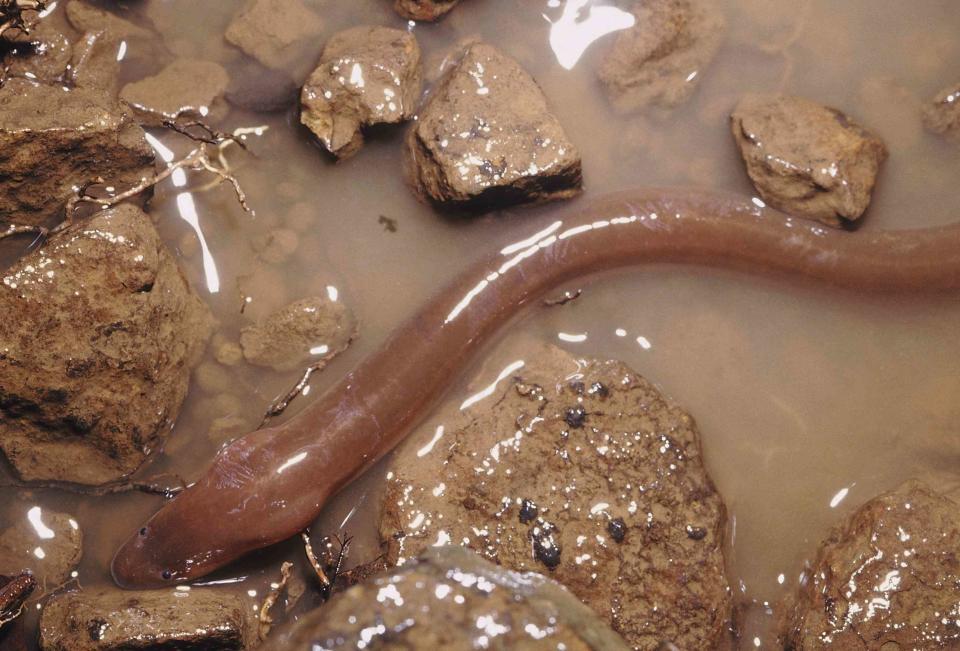Invasive Asian Swamp Eels Spreading In The Everglades, Decimating Native Crawfish
Burmese pythons have nothing on this voracious eater.

ePhotocorp/Getty Images
There is a war going on in the Florida Everglades. There in the vast swamplands, humans are struggling to save the delicate ecosystem from an onslaught of legless invasive species.
While scientists have been rightfully focused on the hulking Burmese python, another invader has been flourishing under our noses. Though smaller and less intimidating looking, when it comes to habitat destruction, Asian swamp eels just might reign supreme.
With its vacuum-like mouth, this long, thin fish has been sucking up everything in its path since 2007, managing to all but wipe out two native species of crayfish in certain pockets of the park.
According to a newly released paper published in the journal Science of the Total Environment, populations of Slough Crayfish and Everglades Crayfish in the area of the Everglades known as Taylor Slough dropped 99% since the eels invaded. Flagfish numbers also dropped by 99%.
“You can’t say 100% because there were like two crayfish [left],” lead author Matthew Pintar told Miami Herald.
Speaking with WINK News, Pintar called the decline of the creatures that nesting wading birds rely on “very alarming.”
“If they continue to have sort of effects, especially on crayfish and smaller fish, like we’ve seen at Taylor Slough, we can see, you know, effects across the trophic levels, you know, potential effects on weight and breeding success,” he said. “When you take what were, you know, two of the most common species in the whole system, and they’re gone now. It’s very alarming.”
Given this, Pintar told the Herald that the Asian swamp eel should dethrone the Burmese python as “the most formidable invasive species in the Everglades.”
“In Taylor Slough, they’re the No. 1 species in terms of the threat they pose to the ecosystem,” he explained. “It’s potentially the worst species we’ve had yet.”
The Asian swamp eel has both gills and lungs, meaning it can survive on water and land, making it unlikely suited to survive in the Everglades. They are the only predator in the area with such abilities, allowing them to prey on creatures like crayfish and killifish who are reliant on drought season to hatch and raise their young.
Pintar worries that, left unchecked, Asian swamp eels could leave birds without enough food.
“In ten years’ time if they continue to spread and have the same effects we might see more whole food web effects,” he told the Herald.
For more Southern Living news, make sure to sign up for our newsletter!
Read the original article on Southern Living.

